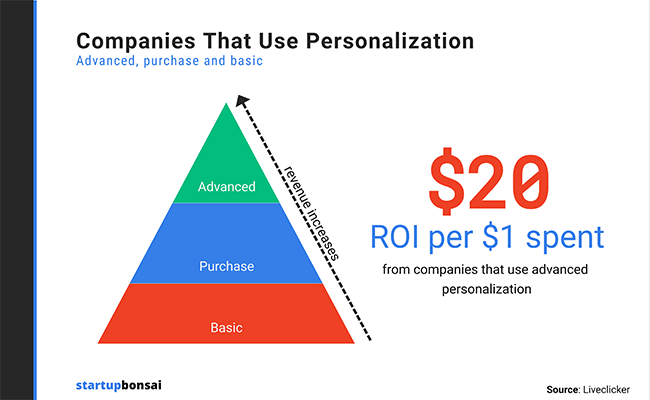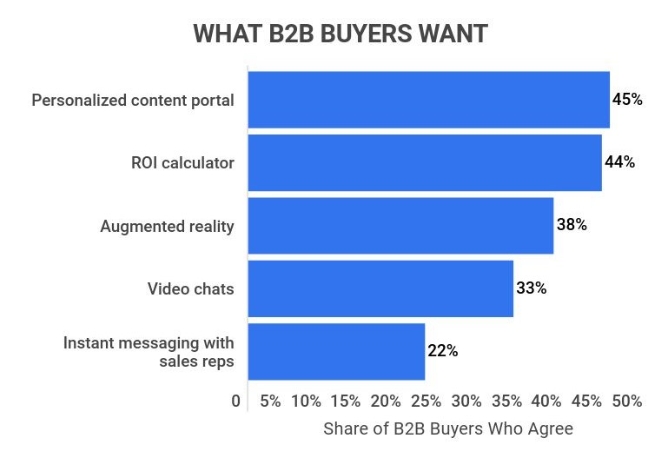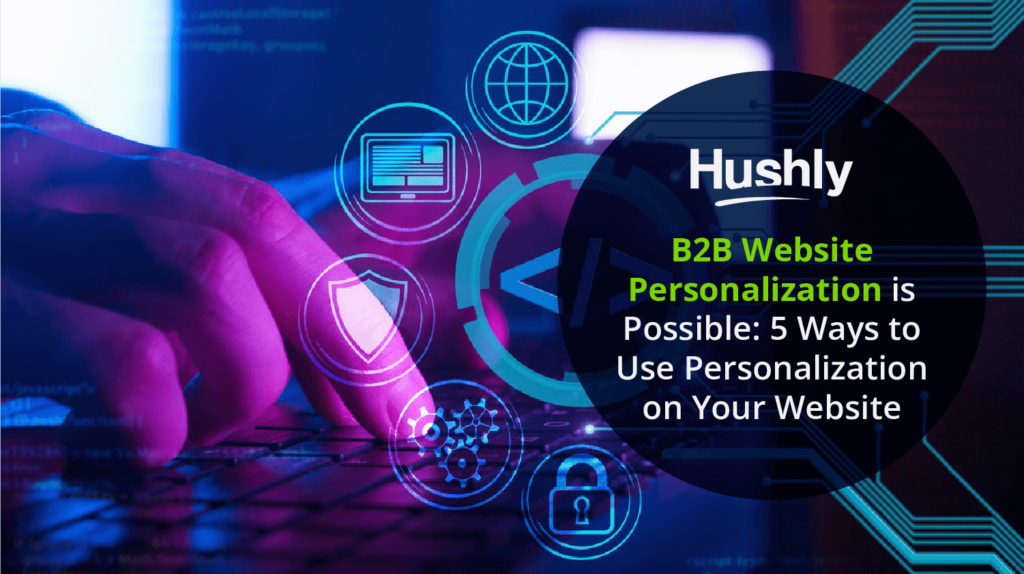Filters
Content Type
Topic
The Need for B2B Personalization is Growing: What You Should Be Doing to Create an Unforgettable Account Experience
B2B personalization is about creating a personalized experience for each customer. The most successful B2B brands personalize their marketing by speaking to the customer’s professional needs and giving them content tailored to their specific situation.
The need for B2B personalization is growing, and according to one study by Accenture, 73% of B2B buyers now want a personalized B2C-like experience. The challenge for B2B marketers is that the B2B customer journey is much more complex than the B2C one. B2B buyers have a much more complex set of needs than B2C buyers, and they often have a much more complex buying process that requires multiple touchpoints and more time.
While B2B website personalization is a great place to start, it’s not the only touchpoint you should focus on.

B2B Personalization is More Than a Good Website Experience
B2B personalization is more than a good website experience. It’s about meeting the needs of every individual customer at each touchpoint – whether it be your website, social media profile, or email newsletter.
Essentially, B2B personalization is about creating a unique cross-channel experience for each of your audience members.
Research shows that approximately 73% of B2B executives believe wholeheartedly that their company needs to personalize its marketing efforts because their audience now expects increased personalization. Nearly 90% of online businesses already invest in personalization at some level.
When implemented correctly, companies prioritizing advanced personalization can see returns of nearly $20 for every $1 spent.

Source: Startup Bonsai
Advanced B2B personalization strategies go far beyond a simple personalized email header. These strategies include:
- Behavioral scoring
- Behavioral targeting
- Contextual marketing
- Custom content
- Customer profiling
- Geofencing
- Geo-personalized content
For example, a geofencing strategy can be used to target users based on their location. This allows you to send targeted content to users based on their proximity to your business or within a specific area to ensure that they receive timely and relevant content and offers.
Create an Experience Your Audience Won’t Soon Forget with These 5 B2B Personalization Strategies
Personalization in the B2B world is meant to make your customers feel special. It’s intended to help them engage with your brand on a more human level and make them feel like you are looking after them.
But how do you do this in an industry where B2B relationships are more about product and numbers than they are about people? How do you put a human face on a company that sells to other businesses? Here are some B2B personalization strategies to help you get started:
1. Audience Segmentation
One of the first steps in B2B personalization is to segment your audience. This is crucial because it allows you to tailor your content and offers to the specific needs of each of your customers.
It also allows you to speak to their professional needs, rather than their personal needs. For example, one of your audience members may be a CTO of a company. They are likely to have very different needs than a CEO.
This is especially important when you’re trying to appeal to multiple individuals within a single account. Segmenting your audience allows you to speak to each of them on a personal level, which will help your company stand out from those that lump everyone within an account together.
2. Content Marketing Personalization
In today’s world, content is king. It’s what drives page views, shares, and ultimately, conversions. But to build a strong B2B personalization strategy, you must create content that resonates with your audience. This means going beyond the standard blog post or white paper and creating content specific to your audience segmentation.
It also means getting that content in front of the right people at the right time. Many B2B companies tend to create content that is relevant to their entire audience, rather than tailoring it to specific needs. While this may seem like a good idea at first, it can actually hurt your content marketing strategy in the long run.
Instead of creating content that could be relevant to everyone, invest in creating content relevant to specific audience segments and ensuring you’re distributing it to them when they need it most. A great way to do this is via an adaptive content hub that shows users content based on their unique preferences or previous browsing history.

Source: Zippa
3. Self-Nurturing Landing Pages
Creating a self-nurturing landing page is a great way to get that tailored content in front of your audience. A self-nurturing landing page is a webpage that is designed to naturally direct the visitor to the most relevant content for them. These pages are different from regular landing pages in that they are intended to be more helpful to the visitor and encourage them to engage with your brand.
These pages are great for providing helpful content, such as white papers, case studies, and eBooks, and they can be used to nurture leads and generate more qualified leads for your sales team.
4. Personalized Chat Experiences
One of the easiest ways to humanize your brand is to use personalized chat experiences. If a visitor engages with your brand on a website chat, it helps to have a chat agent that calls them by their first name.
Rather than simply asking how they can help, it helps to field the initial question, “Are you having trouble finding what you’re looking for?” This small change in how you speak to your visitors can go a long way to making them feel like you are looking after them and helping them.
5. Email Personalization
Email personalization is another excellent way to humanize your brand. Emails that are personalized for the recipient are often seen as more trustworthy and more likely to be read than generic emails that feel more like spam.
Start Personalizing Your B2B Experience with Hushly
B2B personalization is more important than ever before. The way you speak to your customers, the content you create, and the way you speak to them on social media can go a long way to making them feel like you are tailoring your experience to their needs.
By personalizing your content, your landing pages, and your chat experiences, you can make your audience feel as if you are speaking directly to them and that your goal is to prioritize their needs over your own. This can help you to stand out from the brands that don’t seem to care about their audience members.
If you’re curious about how incorporating B2B personalization into your strategy could help you reach your business goals, then contact Hushly today and schedule your demo!

The post The Need for B2B Personalization is Growing: What You Should Be Doing to Create an Unforgettable Account Experience appeared first on Hushly.


